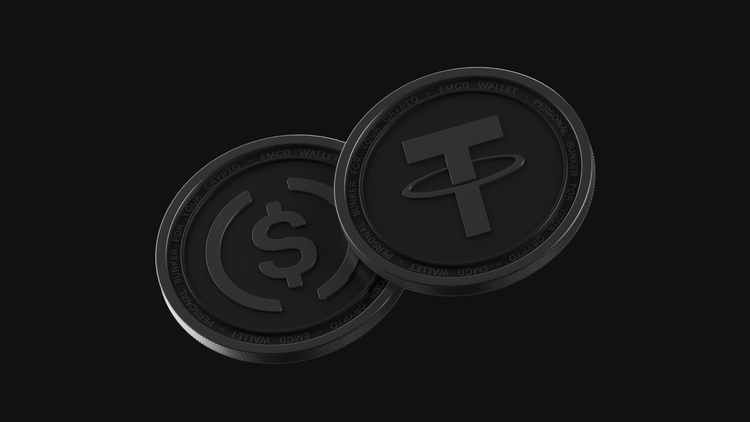How Cryptocurrencies Impact International Payments and Export

The way money moves across borders is changing fast. What used to take days through correspondent banks now happens within minutes on digital rails. The rise of cryptocurrency and global trade shows how technology can remove friction, reduce costs, and open new export opportunities for modern businesses.
How blockchain transforms cross-border payments
Traditional cross-border transactions rely on a chain of intermediaries. Each adds delay, cost, and compliance friction. Blockchain networks replace this chain with a shared digital ledger, allowing value to move peer-to-peer.
A crypto transfer is a settlement record verified by thousands of nodes, not by one central bank. This makes every payment faster, transparent, and traceable.
Stablecoins like USDT or USDC are now used by exporters for international invoicing and b2b settlements because they keep a 1:1 link to fiat currency while running on instant digital infrastructure. These forms of cryptocurrency make it possible to trade globally without traditional delays.
Why businesses use blockchain payments
- Speed – Settlements complete in minutes, even on weekends
- Cost – Fees are 0.5–1 %, versus 2–7 % for bank wires
- Access – Companies in under-banked regions can join global markets without pre-funding foreign accounts
Providers such as EMCD Pay offer gateway solutions where companies can send, receive, and store assets without taking custody risks. Inside the EMCD ecosystem, tools like EMCD Wallet and Crypto Processing automate conversions between stablecoins and fiat currencies, giving exporters transparent cross-border settlement options.
How cryptocurrencies affect international trade
The impact of cryptocurrencies on trade goes beyond faster transactions. They help firms use programmable money for automatic escrow, milestone-based payments, or supplier financing.
For example, a manufacturer in Asia can receive crypto payments instantly, release goods after on-chain confirmation, and record every step in a tamper-proof ledger. That reduces dispute risks and improves trust in B2B logistics. Exporters that do embrace cryptocurrency gain speed and reliability that legacy systems cannot match.
Bitcoin still serves as a benchmark asset, but businesses now prefer stablecoins for predictable pricing. Combining bitcoin liquidity with dollar-pegged tokens lets exporters hedge volatility while keeping settlement speed.
Analysts note that stablecoin transaction volume already exceeds $30 trillion yearly, proving how digital rails affect trade efficiency at scale.
Main advantages for exporters
| Benefit | Explanation |
| Lower fees | No correspondent banks or FX spreads. |
| Faster cash flow | Instant receipts improve working capital. |
| Transparency | Public records simplify audit and compliance. |
| Security | Encryption and decentralised verification prevent fraud. |
Implementation: how businesses integrate crypto payment systems
To do this safely, companies partner with regulated payment gateways that connect crypto networks and bank rails. Such solutions include automated conversion, AML screening, and reporting dashboards.
EMCD’s Crypto Processing product provides B2B APIs so exporters can accept stablecoins and get same-day settlement in USD or EUR. This model keeps digital currencies off the balance sheet while preserving blockchain benefits.
Integration typically follows three steps:
- Evaluate which international corridors cause the most delays
- Add a gateway to handle on/off-ramp operations
- Monitor transaction data and adjust conversion thresholds
This hybrid system works because blockchain rails handle global value transfer while regulated partners complete settlement locally. Exporters can therefore enjoy the flexibility of crypto networks and the stability of fiat accounting. Businesses that do this efficiently often outperform competitors in speed and cost across multiple cross-border corridors.
How cryptocurrencies impact export competitiveness
Modern businesses competing in international trade increasingly rely on digital payment rails. Using cryptocurrencies helps them cut transaction costs, manage liquidity better, and reach global customers faster.
A European exporter does not need to wait for SWIFT confirmation; they can receive stablecoin payments directly into a verified wallet, convert through EMCD, and ship goods the same day.
Lower fees mean better margins, while faster settlement cycles support expansion into new cross-border markets that were previously unreachable under traditional banking systems.
Export use cases where blockchain adds value
- eCommerce platforms using bitcoin payments for instant settlement
- B2B logistics firms paying overseas suppliers in stablecoins
- Manufacturers securing orders through on-chain escrow contracts
- Service exporters using crypto accounts for recurring subscriptions
These examples prove that digital money does not just replace existing rails, it upgrades them.
Conclusion: the future of borderless finance
Cryptocurrencies have become a real tool for exporters, not a speculative trend. By combining blockchain security with regulated payment infrastructure, businesses can enter international markets faster and cheaper.
Platforms like EMCD bridge the two worlds, offering gateway solutions for compliant and efficient cross-border operations.
In global trade, the companies that learn how to integrate digital assets early will gain a competitive edge — saving time, improving transparency, and unlocking new markets that traditional banks still overlook.




